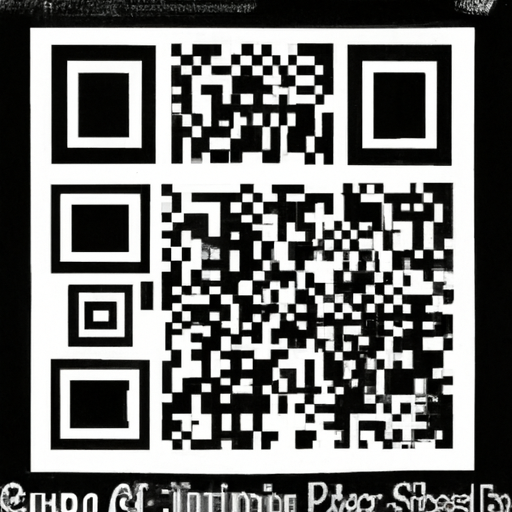In this informative video titled “40 Windows Commands you NEED to know (in 10 Minutes)” by NetworkChuck, you’ll discover a comprehensive list of the top 40 essential Windows Command Prompt commands that every Windows user should be familiar with. From checking your IP address using “ipconfig” to speeding up your computer without having to reinstall Windows, these commands cover a wide range of functions that can greatly enhance your Windows experience. The video also showcases how to launch the Windows command prompt and explores various commands such as “findstr,” “clip,” “nslookup,” “cls,” “getmac,” “powercfg,” “chkdsk,” “sfc,” “DISM,” “tasklist,” “taskkill,” “netsh,” “ping,” “tracert,” “netstat,” and “route.” Additionally, the video is sponsored by Bitdefender, a leading security software company that offers firewall protection, online threat prevention, and privacy features to keep your computer safe. Their product, BitDefender Premium Security, is available for $64.98, saving you $95 off the full price, and can safeguard up to 10 devices, including iOS, Android, and Windows. So, if you’re looking to enhance your Windows skills and optimize your computer’s performance, this video is a must-watch!
In this engaging video by NetworkChuck called “40 Windows Commands you NEED to know (in 10 Minutes),” you’ll learn the top 40 Windows Command Prompt commands that are crucial for any Windows user. The video outlines a range of commands that can be used to perform tasks such as checking your IP address, speeding up your computer, troubleshooting network connectivity issues, managing processes, and more. The commands covered are applicable to both Windows 10 and Windows 11, making them universally useful. Additionally, the video is sponsored by Bitdefender, a trusted security software company offering various products to protect your computer, including firewall protection, online threat prevention, and privacy features. With their BitDefender Premium Security product, you can optimize your system’s performance while ensuring it is kept secure and protected.
Introduction
Welcome to your comprehensive guide on the top 40 Windows Command Prompt commands that are essential for any Windows user. In this article, we will cover a range of commands, from basic ones like checking your IP address with “ipconfig” to more advanced ones like managing power settings with “powercfg.” Whether you’re a beginner or an advanced user, these commands will help you navigate and optimize your Windows experience. So let’s dive in!
Launching the Windows Command Prompt
Before we get started with the commands, let’s first learn how to launch the Windows Command Prompt. There are a few ways to do this:
Accessing the Start Menu
One way to launch the Command Prompt is by accessing the Start menu. Simply click on the Start menu icon in the bottom left corner of your screen, and search for “cmd.” Once you see the Command Prompt app, click on it to open.
Searching for Command Prompt
If you prefer using the search function, you can directly search for “Command Prompt” in the search bar located next to the Start menu icon. This will bring up the Command Prompt app, and you can click on it to launch.
Opening Command Prompt as Administrator
For certain commands that require administrative access, it is recommended to open the Command Prompt as an administrator. To do this, right-click on the Command Prompt app from either the Start menu or the search results, and select “Run as administrator.” This will give you the necessary privileges to execute administrative commands.
Basic Commands
Now that you have launched the Command Prompt, let’s explore some basic commands that can be incredibly useful in your day-to-day Windows usage.
ipconfig: Check Your IP Address
One of the most common tasks is checking your IP address. With the “ipconfig” command, you can quickly view your IP address information. Simply type “ipconfig” into the Command Prompt and hit enter. You will see your IP address, subnet mask, default gateway, and more.
cls: Clear the Command Prompt Window
If the Command Prompt window gets cluttered with text, the “cls” command can come in handy. Typing “cls” and hitting enter will clear the Command Prompt window, leaving you with a clean slate.
dir: List Files and Folders in the Current Directory
To view the files and folders in the current directory, use the “dir” command. Typing “dir” and hitting enter will display a list of the files and folders in the directory you are currently in.
cd: Change Directory
The “cd” command allows you to change directories in the Command Prompt. For example, typing “cd Documents” and hitting enter will navigate to the “Documents” directory. You can also use “..” to go up one level in the directory structure.
echo: Print Text to the Command Prompt
With the “echo” command, you can print text to the Command Prompt window. Simply type “echo” followed by the text you want to display, and hit enter. This can be useful for displaying messages or creating batch scripts.
date: Display and Set the Date
To display the current date in the Command Prompt, use the “date” command. Typing “date” and hitting enter will show the current date. You can also use the “date” command followed by a date in the format “MM-DD-YYYY” to set the system date.
time: Display and Set the Time
Similar to the “date” command, the “time” command allows you to display and set the system time. Typing “time” and hitting enter will show the current system time. You can also use the “time” command followed by a time in the format “HH:MM:SS” to set the system time.
Advanced Commands
Now that you’re familiar with the basic commands, let’s explore some more advanced commands that can help you troubleshoot and optimize your Windows system.
findstr: Search for Strings of Text
The “findstr” command allows you to search for specific strings of text within files or outputs. This can be useful for finding specific information or filtering results. Simply type “findstr” followed by the text you want to search for and the file or command output you want to search within.
clip: Copy Command Prompt Output to Clipboard
If you need to copy the output of a command to the clipboard, the “clip” command can save you time. By using the pipe “|” symbol followed by “clip” at the end of a command, the command output will be copied to the clipboard. You can then paste it into a text editor or another application.
nslookup: Perform DNS Lookup
The “nslookup” command is a powerful tool for performing DNS (Domain Name System) lookups. It allows you to query DNS servers and retrieve information about a specific domain or IP address. Simply type “nslookup” followed by the domain or IP address you want to query.
getmac: Retrieve MAC Address
To retrieve the MAC (Media Access Control) address of your computer’s network adapters, use the “getmac” command. Typing “getmac” and hitting enter will display the MAC addresses of all your network adapters, along with other information such as the interface name.
powercfg: Manage Power Settings
The “powercfg” command allows you to manage power settings on your Windows system. With various options and switches, you can control the power profiles, monitor energy usage, and optimize power settings for different scenarios. Typing “powercfg” and hitting enter will display the available options.
chkdsk: Check Disk for Errors
If you suspect that your disk may have errors, the “chkdsk” command can help. It checks the disk for errors and attempts to fix them. Typing “chkdsk” and hitting enter will scan the disk for errors and display the results. You can also use the “/f” switch to automatically fix errors.
sfc: System File Checker
The “sfc” command is used to scan and repair system files on your Windows system. It can help resolve issues caused by corrupt or missing system files. Typing “sfc /scannow” and hitting enter will scan your system files and attempt to repair any issues it finds.
DISM: Deployment Image Servicing and Management
The “DISM” command is a powerful tool for managing Windows system images. It can be used to repair and modify the Windows installation, including adding or removing components. Typing “DISM /Online /Cleanup /CheckHealth” and hitting enter will check the health of your system image.
tasklist: List Running Processes
The “tasklist” command allows you to view a list of currently running processes on your system. This can be useful for identifying resource-intensive processes or troubleshooting issues. Typing “tasklist” and hitting enter will display a list of running processes, along with their process IDs and other information.
taskkill: Terminate Running Processes
To terminate a running process, use the “taskkill” command. It allows you to forcefully end a process that may be unresponsive or causing issues. Typing “taskkill /F /PID [process ID]” and hitting enter will terminate the specified process.
netsh: Network Shell Command
The “netsh” command is a powerful tool for managing network settings and configurations. It can be used to configure network interfaces, set up wireless networks, and troubleshoot network connectivity. Typing “netsh” and hitting enter will bring up the netsh prompt, where you can enter various commands.
ping: Test Network Connection
The “ping” command is used to test network connectivity between your computer and a specific IP address or domain. It sends ICMP (Internet Control Message Protocol) echo requests and receives echo replies, allowing you to assess network latency and packet loss. Typing “ping [IP address or domain]” and hitting enter will initiate a ping test.
tracert: Trace Route to a Destination
If you want to trace the route that packets take to reach a specific destination, the “tracert” command is your go-to tool. It shows the hops (intermediate network devices) that a packet takes and provides information about the latency of each hop. Typing “tracert [IP address or domain]” and hitting enter will initiate a trace route to the specified destination.
netstat: Display Network Statistics
The “netstat” command is used to display network statistics and active network connections on your system. It provides information about open ports, active connections, and listening ports. Typing “netstat” and hitting enter will display a list of active network connections.
route: Display and Modify Routing Table
The “route” command allows you to view and modify the routing table on your system. It shows the routes that packets take to reach specific networks. Typing “route print” and hitting enter will display the routing table, showing the destination networks and their corresponding gateways.
Additional Tips and Tricks
In addition to the commands mentioned above, there are a few additional tips and tricks that can enhance your Windows Command Prompt experience.
shutdown: Restart or Shutdown the Computer
The “shutdown” command allows you to restart or shutdown your computer from the Command Prompt. Typing “shutdown /r” and hitting enter will restart your computer, while typing “shutdown /s” and hitting enter will shutdown your computer.
Using Additional Switches with the Shutdown Command
To further customize the behavior of the “shutdown” command, you can use additional switches. For example, adding the “/f” switch will force running applications to close, and adding the “/t [time]” switch will set a specific time delay before executing the shutdown.
Accessing the BIOS with the Shutdown Command
If you need to access the BIOS (Basic Input/Output System) settings on your computer, you can use the “shutdown” command. Typing “shutdown /r /fw /f /t 0” and hitting enter will restart your computer and automatically boot into the BIOS settings.
Conclusion
In conclusion, the Windows Command Prompt is a powerful tool that can greatly enhance your Windows experience. Whether you’re a beginner or an advanced user, the commands discussed in this article are essential for troubleshooting, optimizing, and managing your Windows system. From checking your IP address to terminating running processes, these commands will help you navigate and control your Windows environment with ease. So go ahead, experiment with these commands, and discover the full potential of the Windows Command Prompt!













